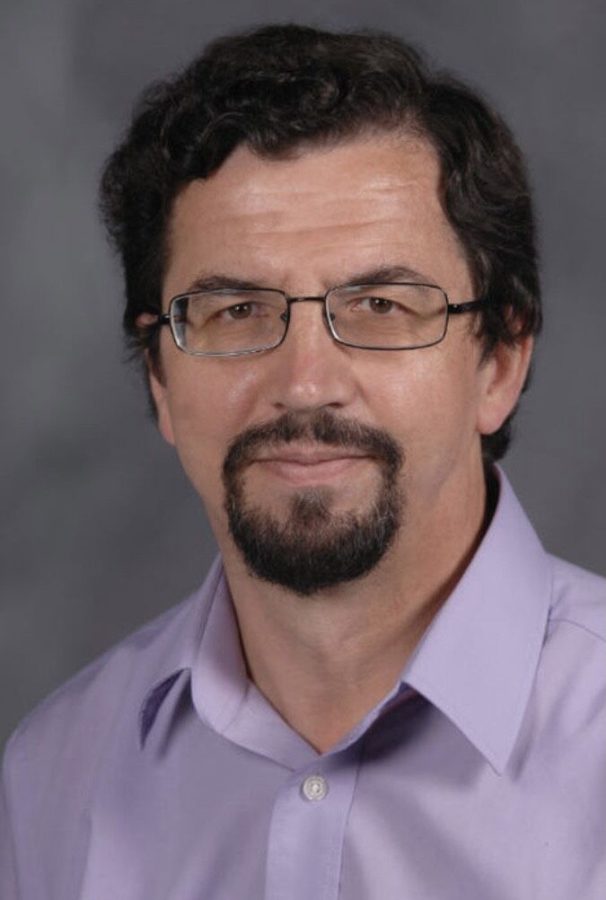Kent State professor conducts research study on microorganism’s energy extraction in relation to liquid crystals
February 21, 2021
Oleg Lavrentovich, who is a trustees research professor in the department of material sciences, used liquid crystal as a medium to extract energy from swarms of swimming bacteria and control their movements in a research study he recently conducted.
“These microorganisms move all the time and are full of energy. Now the question is, can you use this energy to produce some useful work?” Lavrentovich said.
He, along with four graduate students in the Physics and Materials Science programs at Kent State, conducted the study by replacing the water environment the bacteria typically are found in with patterns of different liquid crystal, recording the effect the change has on the behavior of the bacteria.
The liquid crystal environment combines properties of liquids and solids to form matter that flows like a liquid but contains molecules that are crystal shaped.
Lavrentovich found the liquid crystal can control the flow and spacing of the bacteria by guiding them into circular and linear patterns, which then forces them to perform useful work such as transporting cargo.
“If you force them to move in one direction, you will be able to produce some useful work such as carrying cargo within the veins of a sick person,” Lavrentovich said.
The ability to control the microswimmers’ movement could be used to help doctors target anticancer drug injections toward only the tumorous tissue in their patients, as well as help assist the growth of human tissue, according to an article written by Colleen Carroll, for the Kent State Division of Research and Sponsored Programs.
“We can put the microswimmers on any trajectory in order to force them to stop anything we want,” Lavrentovich said.
He is now focusing on how to use this research to conduct further studies on how to create pockets of bacteria in teardrop formation in order to understand small scales in relation to quantum mechanics.
Morgan Boyd covers research. Contact her at [email protected].

















